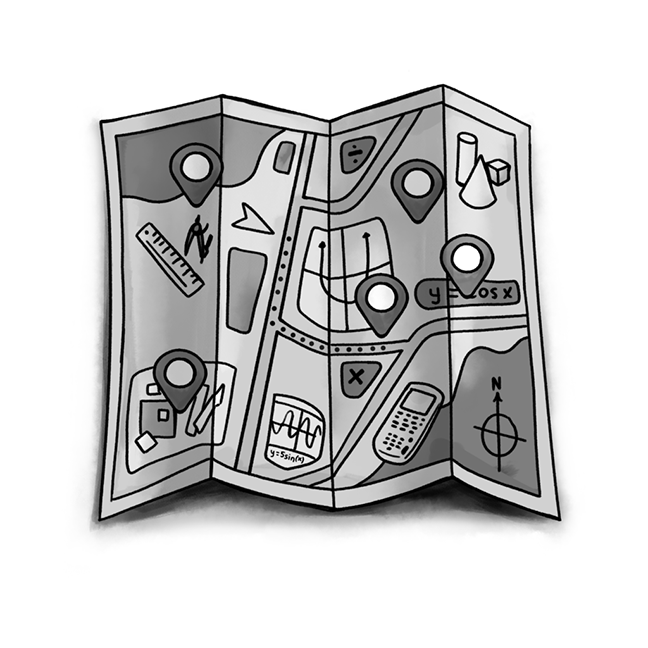Sharon Rendon, Coaching Coordinator, sharonrendon@cpm.org
Whether this is your first year on the journey towards creating a student-centered math classroom or you have been at this work for many years, everyone can continue to refine their practice. There are key components that make this journey a great adventure. They include becoming a reflective practitioner, harnessing the power of collaboration, embracing risk taking, and learning from your mistakes.
The power of improvement starts with reflection and feedback. In Tim Kanold’s latest book, HEART!, he describes that his “personal improvement as a teacher mostly came as a result of becoming a more reflective and mindful practitioner and learning from and embracing my mistakes along the way.” If the learning curve of your students is steep, there is a very high correlation that the learning curve for you and your colleagues is also steep. Don’t lose heart. CPM’s design for professional learning is there as a support along the way. A good starting place for reflection is to keep a journal in which you record thoughts about the day’s lesson. Set a timer for two minutes and write what thoughts come to mind about the lesson. Then you can go back and think about next steps at a later time. You could also grab an iPad or video camera and record a lesson or parts of a lesson, then as time allows review that part or portion of the lesson and reflect. Don’t allow one or more difficult lessons or days to derail your commitment to creating an environment for students to be mathematicians each and every day.
Another key element in the implementation of a student-centered classroom is collaboration among colleagues. Take advantage of collaborating with one or more of your fellow coworkers. A new model for teacher collaboration has surfaced called a “Pineapple Chart.” This is a systematic way to put out the welcome mat and invite other teachers into your classroom. So when you are doing something worth watching, you list it on the chart and let others know your door is open. It can be thought of as a calendar of open house lessons. For more information, visit What is a pineapple chart? If you are fortunate enough to have a dedicated professional learning community time, be sure to take advantage of that time to collaboratively plan and consider student learning on a regular basis. If you are in an isolated location, find a colleague through a virtual method. Use Twitter, Facebook, or plan to attend the CPM conference or a follow-up workshop to find people you can share ideas with and get support.
As you are planning lessons together, remember to plan from a student perspective. Implement the lessons as designed, which requires the students to do the mathematical thinking! Consider how students will engage with the mathematics, and what the essential learning is for each student. Ask yourself what mathematical conversations you will highlight during the closure of the lesson. All students need to understand what it looks like and sounds like to be a mathematician. Work with your colleagues to establish a norm in each of your mathematics classrooms that will support this shift in thinking. Mathematicians do not always immediately have the correct answer; they most likely make multiple wrong starts before they find the correct solution pathway. How do your students embrace learning from mistakes? Most students know it is okay to make mistakes, but knowing this and accepting this are very different.
Finally, the ability to apply the same thinking about mistakes to the teaching journey you are on to create a student-centered, problem-based classroom is critical. Allow yourself to take risks and make mistakes. Every lesson will not be perfect or be implemented spectacularly, however you will learn along the way. A great quote to be reminded of is, “It is not about what was wrong, it is about what is next.”
Be okay with the journey taking time. Keep measuring your practice by the three pillars that are foundational to the design of CPM lessons.
- Is there evidence of my students working in collaboration?
- Am I using the problems and tasks as designed? Or if I am modifying them, am I maintaining the rigor and providing support when needed to students?
- Am I allowing students to develop understanding over time? Am I allowing students to make connections among different mathematical ideas? How is my pacing?
As your journey continues to take shape, maintain your commitment to making reflection a habit, hold tight to collaboration, and embrace the opportunity to take risks and learn from your mistakes. And enjoy the RIDE!
